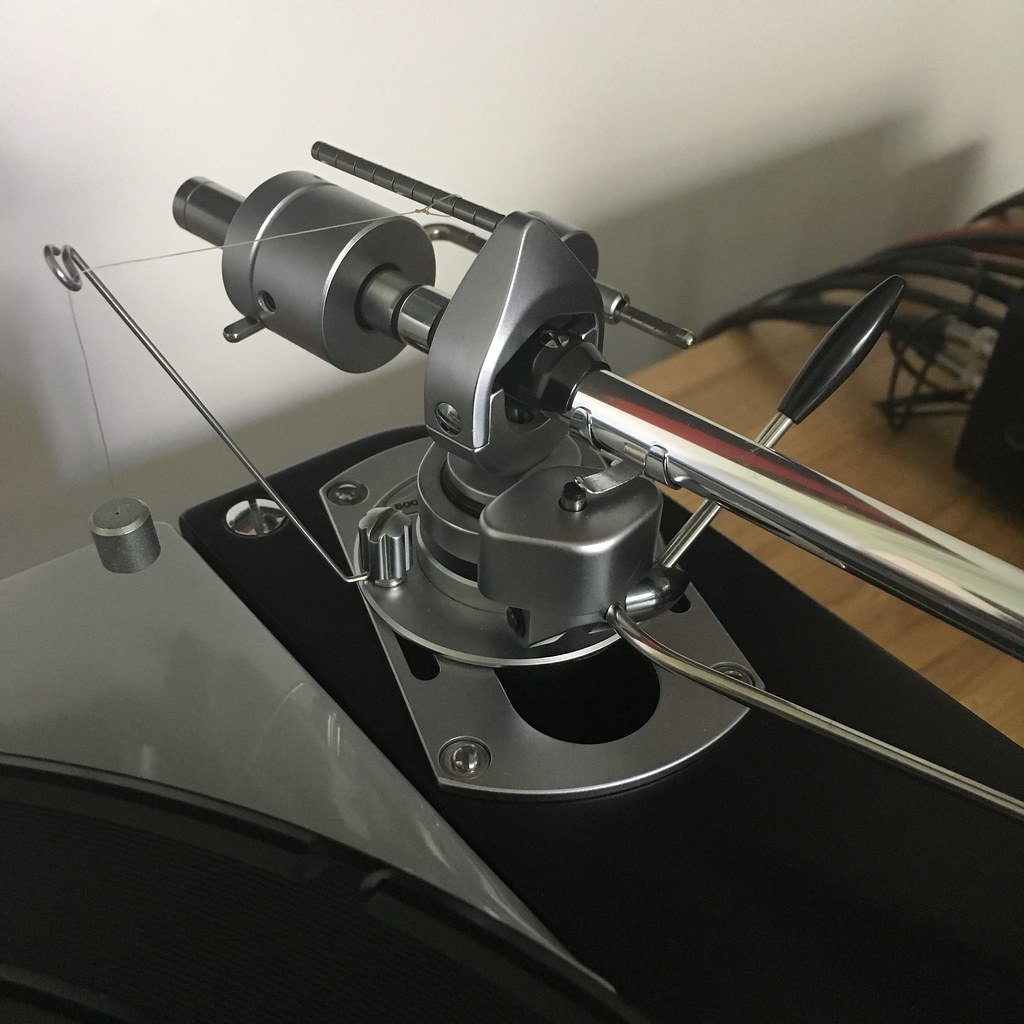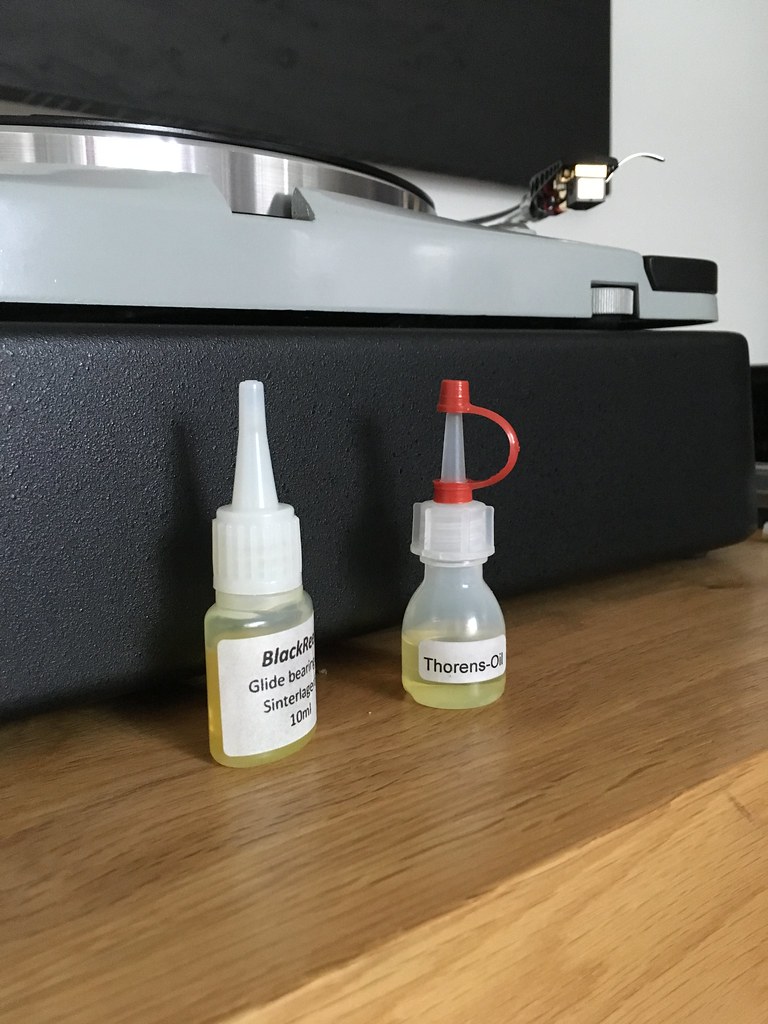Tony L
Administrator
I bought a set of these AudioSilente sintered bronze motor bushings something over a year ago now, but until today hadn’t got around to fitting them due to quite exceptional laziness. They are, as ever, very nicely made and went in without any issue, though I have for the time being stuck with my little machine screws rather than use the supplied rivets as I don’t have a tool, plus I found a lazy way of doing the top bearing without desoldering all the motor leads (there is just enough slack!) and I’d have had to do it properly if I was going to start hitting things with hammers or however one rivets stuff. That aside it all went together fine and I don’t have much to report as it is too freshly done to really have any opinion. My 124 now has every bronze bushing replaced.
My feeling is the motor went together a bit easier than normal, i.e. it was marginally less of a faff to align the casing for quiet running. I suspect my original bushings were just a little worn/lose as, at this stage as unloaded motor spin-down speed is a little less, but it was exceptionally good/long previous at about 35 seconds or so. I think it is about 15-20 at present, but I’ll check that again when it has bedded in for a week or so under normal use. It is certainly running quietly and to speed at present.
The main reason in writing this at this point is to mention that my top bearing was pretty much dry which really surprised me as I’d presure loaded the old bushings with oil and totally saturated the felts at the last total rebuild which was only a few years back. The bottom bearing was still very well lubed and they both started out the same. This is all the more surprising as I don’t actually play much vinyl these days (too many bargain CDs around!) so it is not from heavy usage. As such I suspect an annual lube is probably a good thing. I suspect this can be done with a syringe from the top just by removing the motor pulley rather than decapitating the whole deck. Something to bare in mind if you haven’t popped the motor open for a while anyway.
My feeling is the motor went together a bit easier than normal, i.e. it was marginally less of a faff to align the casing for quiet running. I suspect my original bushings were just a little worn/lose as, at this stage as unloaded motor spin-down speed is a little less, but it was exceptionally good/long previous at about 35 seconds or so. I think it is about 15-20 at present, but I’ll check that again when it has bedded in for a week or so under normal use. It is certainly running quietly and to speed at present.
The main reason in writing this at this point is to mention that my top bearing was pretty much dry which really surprised me as I’d presure loaded the old bushings with oil and totally saturated the felts at the last total rebuild which was only a few years back. The bottom bearing was still very well lubed and they both started out the same. This is all the more surprising as I don’t actually play much vinyl these days (too many bargain CDs around!) so it is not from heavy usage. As such I suspect an annual lube is probably a good thing. I suspect this can be done with a syringe from the top just by removing the motor pulley rather than decapitating the whole deck. Something to bare in mind if you haven’t popped the motor open for a while anyway.
This site contains affiliate links for which pink fish media may be compensated.




